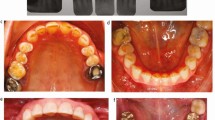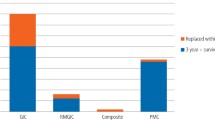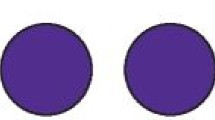Key Points
-
This study reminds dentists that they are the most important factor determining the survival of Class V restorations.
-
Presents evidence that has been collected from a large number of restorations placed in dental practices and is therefore likely to be particularly relevant to general practitioners.
-
Identifies a number of factors associated with poor restoration survival which can help dentists improve their patient care.
Abstract
Objective To evaluate the survival over five years of Class V restorations placed by UK general practitioners, and to identify factors associated with increased longevity.
Design Prospective longitudinal cohort multi-centre study.
Setting UK general dental practices.
Materials and method Ten general dental practitioners each placed 100 Class V restorations of varying sizes, using a range of materials and recorded selected clinical information at placement and recall visits. After five years the data were analysed using the Kaplan-Meier method, log-rank tests and Cox regressions models to identify significant associations between the time to restoration failure and different clinical factors.
Results After five years 275/989 restorations had failed (27.8%), with 116 (11.7%) lost to follow-up. Cox regression analysis identified that, in combination, the practitioner, patient age, cavity size, moisture contamination and cavity preparation were found to influence the survival of the restorations.
Conclusions At least 60.5% of the restorations survived for five years. The time to failure of Class V restorations placed by this group of dentists was reduced in association with the individual practitioner, smaller cavities, glass ionomer restorations, cavities which had not been prepared with a bur, moisture contamination, increasing patient age, cavities confined to dentine and non-carious cavities.
Similar content being viewed by others
Log in or create a free account to read this content
Gain free access to this article, as well as selected content from this journal and more on nature.com
or
References
Levitch L C, Bader J D, Shugars D A, Heymann H O . Non-carious cervical lesions. J Dent 1994; 22: 195–207.
Perez C R . Alternative technique for Class V resin composite restorations with minimum finishing/polishing procedures. Oper Dent 2010; 35: 375–379.
Summit J B, Williams Robins, J, Hilton T J, Schwartz R S . Fundamentals of operative dentistry: a contemporary approach. 3rd ed. Chicago: Quintessence Publishing Co Inc., 2006.
Pecie R, Krejci I, García-Godoy F, Bortolotto T . Noncarious cervical lesions (NCCL) -a clinical concept based on the literature review. Part 2: restoration. Am J Dent 2011; 24: 183–192.
Bartlett D W, Shah P . A critical review of non-carious cervical (wear) lesions and the role of abfraction, erosion, and abrasion. J Dent Res 2006; 85: 306–312.
Litonjua L A, Andreana S, Bush P J, Tobias T S, Cohen R E . Noncarious cervical lesions and abfractions: a re-evaluation. J Am Dent Assoc 2003; 134: 845–850.
Van Meerbeek B, Peumans M, Poitevin A et al. Relationship between bond-strength tests and clinical outcomes. Dent Mater 2010; 26: e100–121.
Heintze S D . Systematic reviews: I. The correlation between laboratory tests on marginal quality and bond strength. II. The correlation between marginal quality and clinical outcome. J Adhes Dent 2007; 9 (Suppl 1): 77–106.
Abdalla A I, El Sayed H Y . Clinical evaluation of a self-etch adhesive in non-carious cervical lesions. Am J Dent 2008; 21: 327–330.
Van Landuyt K L, Peumans M, Fieuws S et al. A randomized controlled clinical trial of a HEMA-free all-in-one adhesive in non-carious cervical lesions at 1 year. J Dent 2008; 36: 847–855.
Onal B, Pamir T . The two-year clinical performance of esthetic restorative materials in noncarious cervical lesions. J Am Dent Assoc 2005; 136: 1547–1555.
Turkun L S, Celik E U . Noncarious Class V lesions restored with a polyacid modified resin composite and a nanocomposite: a two-year clinical trial. J Adhes Dent 2008; 10: 399–405.
American Dental Association Council on Dental Materials, Instruments and Equipment. Revised American Dental Association acceptance program guidelines for dentin and enamel adhesive materials. Chicago: American Dental Association, 1994.
Steele J . NHS dental services in England: an independent review led by Professor Jimmy Steele. London: Department of Health, 2009.
McCoy R B, Anderson M H, Lepe X, Johnson G H . Clinical success of Class V composite resin restorations without mechanical retention. J Am Dent Assoc 1998; 129: 593–599.
van Dijken J W, Pallesen U . Long-term dentin retention of etch-and-rinse and self-etch adhesives and a resin-modified glass ionomer cement in non-carious cervical lesions. Dent Mater 2008; 24: 915–922.
Folwaczny M, Mehl A, Kunzelmann K H, Hickel R . Clinical performance of a resin-modified glass-ionomer and a compomer in restoring non-carious cervical lesions. 5-year results. Am J Dent 2001; 14: 153–156.
Smales R J, Ng K K . Longevity of a resin-modified glass ionomer cement and a polyacid-modified resin composite restoring non-carious cervical lesions in a general dental practice. Aust Dent J 2004; 49: 196–200.
Köhler B, Rasmusson C G, Odman P . A five-year clinical evaluation of Class II composite resin restorations. J Dent 2000; 28: 111–116.
Stewardson D, Thornley P, Bigg T et al. The survival of Class V restorations in general dental practice. Part 1, baseline data. Br Dent J 2010; 208: E17; discussion 406–407.
Silness J, Loe H . Periodontal disease in pregnancy. II. Correlation between oral hygiene and periodontal condtion. Acta Odontol Scand 1964; 22: 121–135.
Stewardson D A, Thornley P, Bigg T et al. The survival of Class V restorations in general dental practice. Part 2, early failure. Br Dent J 2011; 210: E19.
Burrow M F, Tyas M J . Five-year clinical evaluation of One-Up Bond F in non-carious cervical lesions. Am J Dent 2007; 20: 361–364.
Kubo S, Kawasaki K, Yokota H, Hayashi Y . Five-year clinical evaluation of two adhesive systems in non-carious cervical lesions. J Dent 2006; 34: 97–105.
Loguercio A D, Reis A, Barbosa A N, Roulet J F . Five-year double-blind randomized clinical evaluation of a resin-modified glass ionomer and a polyacid-modified resin in noncarious cervical lesions. J Adhes Dent 2003; 5: 323–332.
Demirci M, Sancakli H S, Uysal O . Clinical evaluation of a polyacid-modified resin composite (Dyract) in Class V carious lesions: 5-year results. Clin Oral Investig 2008; 12: 157–163.
Franco E B, Benetti A R, Ishikiriama S K et al. 5-year clinical performance of resin composite versus resin modified glass ionomer restorative system in non-carious cervical lesions. Oper Dent 2006; 31: 403–408.
Peumans M, De Munck J, Van Landuyt K, Lambrechts P, Van Meerbeek B . Five-year clinical effectiveness of a two-step self-etching adhesive. J Adhes Dent 2007; 9: 7–10.
Burke F J, Lucarotti P S, Holder R L . Outcome of direct restorations placed within the general dental services in England and Wales (part 2): variation by patients' characteristics. J Dent 2005; 33: 817–826.
Heymann H O, Sturdevant J R, Bayne S, Wilder A D, Sluder T B, Brunson W D . Examining tooth flexure effects on cervical restorations: a two-year clinical study. J Am Dent Assoc 1991; 122: 41–47.
Tay F R, Pashley D H . Resin bonding to cervical sclerotic dentin: a review. J Dent 2004; 32: 173–196.
Carrigan P J, Morse D R, Furst M L, Sinai I H . A scanning electron microscopic evaluation of human dentinal tubules according to age and location. J Endod 1984; 10: 359–363.
Tagami J, Hosoda H, Burrow M F, Nakajima M . Effect of aging and caries on dentin permeability. Proc Finn Dent Soc 1992; 88 (Suppl 1): 149–154.
Toto P D, Kastelic E F, Duyvejonck K J, Rapp G W . Effect of age on water content in human teeth. J Dent Res 1971; 50: 1284–1285.
Arola D, Reprogel R K . Effects of aging on the mechanical behaviour of human dentin. Biomaterials 2005; 26: 4051–4061.
Heintze S D, Ruffieux C, Rousson V . Clinical performance of cervical restorations – a meta-analysis. Dent Mater 2010; 26: 993–1000.
Michael J A, Townsend G C, Greenwood L F, Kaidonis J A . Abfraction: separating fact from fiction. Aust Dent J 2009; 54: 2–8.
Peumans M, Kanumilli P, De Munck J, Van Landuyt K, Lambrechts P, Van Meerbeek B . Clinical effectiveness of contemporary adhesives: a systematic review of current clinical trials. Dent Mater 2005; 21: 864–881.
Sidhu S K . Clinical evaluations of resin-modified glass-ionomer restorations. Dent Mater 2010; 26: 7–12.
Lee W C, Eakle W S . Stress-induced cervical lesions: review of advances in the past 10 years. J Prosthet Dent 1996; 75: 487–494.
Miller N, Penaud J, Ambrosini P, Bisson-Boutelliez C, Briancon S . Analysis of etiologic factors and periodontal conditions involved with 309 abfractions. J Clin Periodontol 2003; 30: 828–832.
Takehara J, Takano T, Akhter R, Morita M . Correlations of noncarious cervical lesions and occlusal factors determined by using pressure-detecting sheet. J Dent 2008; 36: 774–779.
Blunck U . Improving cervical restorations: a review of materials and techniques. J Adhes Dent 2001; 3: 33–44.
Wood I, Jawad Z, Paisley C, Brunton P . Non-carious cervical tooth surface loss: a literature review. J Dent 2008; 36: 759–766.
Acknowledgements
This work was supported by a grant from the British Dental Association Shirley Glasstone Hughes Memorial Fund.
Author information
Authors and Affiliations
Corresponding author
Rights and permissions
About this article
Cite this article
Stewardson, D., Creanor, S., Thornley, P. et al. The survival of Class V restorations in general dental practice: part 3, five-year survival. Br Dent J 212, E14 (2012). https://doi.org/10.1038/sj.bdj.2012.367
Accepted:
Published:
Issue date:
DOI: https://doi.org/10.1038/sj.bdj.2012.367
This article is cited by
-
Effect of incorporation of nano-hydroxyapatite particles on the clinical performance of conventional and resin-modified glass ionomer cement in class V cavities: split-mouth, randomized controlled trial
Bulletin of the National Research Centre (2021)
-
Effect of cavity lining on the restoration of root surface carious lesions: a split-mouth, 5-year randomized controlled clinical trial
Clinical Oral Investigations (2020)
-
A 2-year clinical evaluation of direct and semi-direct resin composite restorations in non-carious cervical lesions: a randomized clinical study
Clinical Oral Investigations (2020)
-
The ultimate guide to restoration longevity in England and Wales. Part 3: Glass ionomer restorations – time to next intervention and to extraction of the restored tooth
British Dental Journal (2018)
-
The effect of a nano-filled resin coating on the 3-year clinical performance of a conventional high-viscosity glass-ionomer cement
Clinical Oral Investigations (2014)



